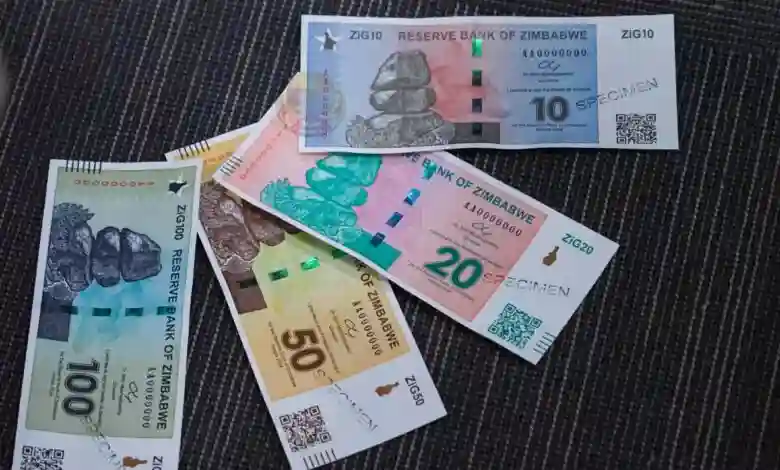Zimbabwe’s gold-backed currency, the ZiG, which was devalued by 43% by the Reserve Bank of Zimbabwe (RBZ) on Friday, September 27, continued to decline against the United States dollar on Monday.
According to data on the central bank’s website, the ZiG was quoted at 24.88 per dollar, up from 24.39 on Friday.
On Friday, September 27, the RBZ set the official exchange rate at ZiG24.3 per US$1, a significant increase from ZiG14.1 per US$1.
Lyle Begbie, an economist at Oxford Economics, said that while recent adjustments are positive, they are unlikely to be sufficient.
He added that ongoing current account and fiscal deficits, coupled with limited access to external capital markets, will continue to exert significant pressure on the ZiG currency.
RBZ Governor, John Mushayavanhu, in an interview with the state-controlled Sunday Mail newspaper, said that the devaluation was necessitated by an artificial spike in demand for foreign currency, combined with inflationary pressures. He said:
The underlying value of the structured currency (ZiG) is designed to mimic the movement in the prices of reserve assets backing it and the inflation differentials.
In this regard, as communicated in the April 2024 Monetary Policy Statement, the intervening exchange rate shall be determined by the inflation differential between ZiG and USD inflation rates and the movement in the price of the basket of precious minerals held as reserves.
In this regard, while the gold price has been firming, suggesting appreciation of the gold price-implied exchange rate, the country has witnessed increased inflationary pressures as evidenced by month-on-month inflation of 1,4 per cent in August 2024 and 5,8 per cent in September 2024, thus offsetting the firming gold price.
This has, therefore, underscored the need for a price discovery mechanism to align the exchange rate with the macroeconomic dynamics underpinning the structured currency.
The movement in the exchange rate is expected to play a critical shock-absorbing impact on the prevailing excess liquidity in the economy, which helps anchor inflation expectations and minimise the inflation differentials going forward.
The ZiG, which is supported by Zimbabwe’s gold and hard-currency reserves, was introduced in early April to replace the Zimbabwean dollar, which had plummeted by approximately 80% in value since the beginning of the year.
According to Mushayavanhu, the current reserves for the ZiG amount to US$380 million.
More: Pindula News

